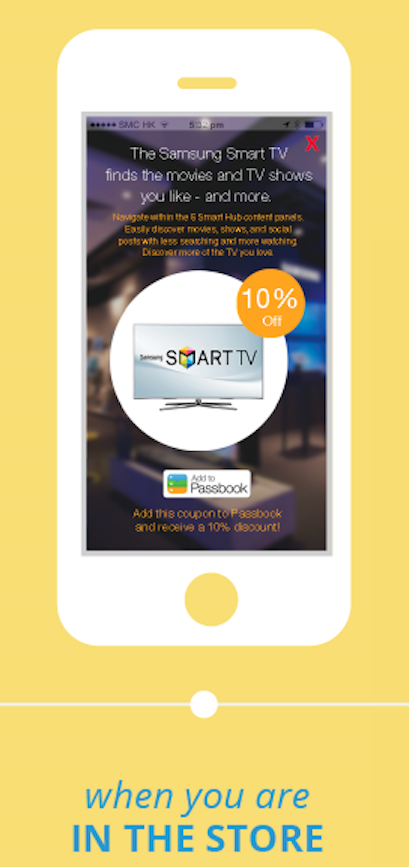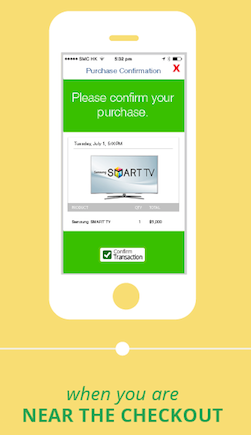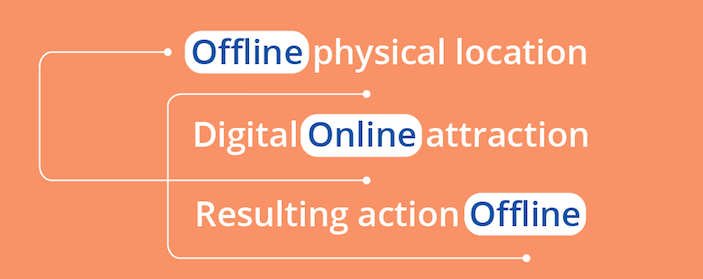Beacons are well on their way to becoming the future of business. Do you know everything you should about iBeacon? If not, you will after reading this.
What are Beacons?
Beacons are transmitters that broadcast signals at set intervals so that smart devices within its proximity are able to listen for these signals and react accordingly. They run off of Bluetooth low-energy (BLE) wireless technology.
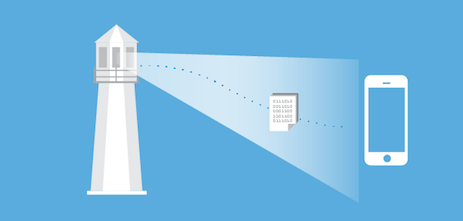
What is BLE technology?
BLE is a type of Bluetooth technology that is low energy. Hence the name- Bluetooth Low energy. BLE communication comprises of advertisements of small packets of data which are broadcast at regular intervals through radio waves. BLE broadcasting is a one-way communication method; it simply advertises its packets of data. These packets of data can then be picked up by smart devices nearby and then be used to trigger things like push messages, app actions, and prompts on the smart device.
A typical beacon broadcast signals at the rate of 100ms. If you are using a beacon that is plugged in you can increase the frequency of the beacon without having to worry about battery life. This would allow for quicker discovery by smartphones and other bluetooth enabled devices.
BLE technology is idle for contextual and proximity awareness. Beacons typical broadcast range is between 10-30 meters. Some places advertise beacons as broadcasting up to 75 meters. They measure that is an idle setting where the signal will experience nothing being in the way. So you should count on 30 meters as your broadcast range. This is ideal for indoor location tracking and awareness.
What is iBeacon
iBeacon is Apple’s implementation of Bluetooth low-energy (BLE) wireless technology to create a different way of providing location-based information and services to iPhones and other iOS devices. iBeacon arrived in iOS6, which means it works with iPhone 4s or later. iPad (third generation and onwards) iPad mini and iPod touch (fifth generation or later). So very few people own devices not compatible with iBeacon. Which is great news for anyone broadcasting iBeacon signals. It’s worth noting the same BLE technology is also compatible with Android 4.3 and above.
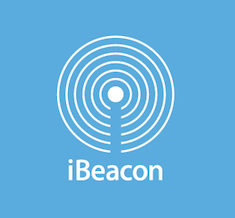
How do iBeacon and BLE technology work together?
When broadcasting iBeacon, an advertising packet consists of four main components.
UUID(Universally Unique Identifier): The UUID contains 32 hexadecimal digits, split into 5 groups.
A UUID looks like this-
3f779380-9d6f-11e5-b3e9-0002a5d5c51b
The UUID serves as a way to identify each device in terms of manufacturer, application, or owner. It allows you to distinguish beacons within your network from all the other beacons in networks outside of your control.
Example- If United Airlines maintained a network of beacons within an airport, all United Airlines beacons would share the same UUID. This allows United Airlines app to know which beacons advertisements come from United Airlines beacons.
Major: This is a 2 byte string used to identify a smaller subset of beacons within a larger group.
Example- United Airlines would have different majors for different airports. This way they could see exactly where the device that is receiving the signal. Letting them know what airport the user is in.
Minor: This is a 2 byte string that identifies individual beacons.
Example- United Airlines would have a different minor for each beacon that is placed at a gate. So each gate would have its own unique minor. Allowing for the app to know exactly where the user is located.
Tx Power: This is used to determine the proximity in which the beacon can broadcast.
A beacon setup may look something like this-
UUID: 3f779380-9d6f-11e5-b3e9-0002a5d5c51b
Major: 5
Minor: 2
The owner would then be able to identify that the beacon is United Airlines, airport #5, gate 2.
Now we know what beacons are and how it works with iBeacon. But the important part is how BLE technology is going to be used in the world.
How is BLE technology used?
IBeacons are used to send contextually aware, value driven messages to consumers. Beacons should be about providing value to the customer, not just advertisements. In a store this could be product information, while in an airport it could be flight information once they arrive at the gate. There are endless options within every scenario.
Let’s go through what a beacon experience may look like in a retail store.
When a customer is 10-30 meters away from the store. A business can deliver content that entices customers to enter the retail location. They can do this by delivering a lock screen message.
With this are a few important notes:
First, the consumer must be in front of the store at least 20 seconds in order to receive the lock screen notification. This prevents lock screens from being bombarded with messages.
Second, the consumer must either have the stores app, or a piece of their mobile wallet content. In other words, the consumer must have something within their device that communicates directly with the beacon’s UUID. If they do not, then they signals cannot cause a command within the phone.
The pictures I am using have contextually aware reactions that take place within an app. If the consumer were to open the app, these are the screens they would see depending on their location. The app then allows the consumers to add the offer to their mobile wallet, creating another connection between the consumer and the store.
When a customer has entered the store and is roughly 5-10 meters away from a beacon. The business could deliver a link to product information, reviews, or videos demonstrating the product being used.
When a customer is less than 2 meters away from the beacon. The business could enable a mobile coupon to show on the lock screen or use the app to confirm a transaction.
When customers leave the store, the business should retarget users with content that increases repeat visits and loyalty. They can do this through coupons or even a simple thank you message. Businesses can choose what time to deliver this content and what type of content to deliver.
Want to see all of this in action? Check out the video below.
The Online to Offline experience.
By using beacons in this way, you creating a new shopping experience. You are enabling consumers to combine both the online and offline shopping experiences. Giving them the best of both worlds.
iBeacon Implementation scenarios
There are many scenarios where iBeacon can be implemented. It really is only limited by how creative a person wants to get. I thought it would be a good idea to break down some of the most popular iBeacon implementations.
Retail: This is what we just covered. Entice, inform, transact, retarget. Beacons have many powerful uses within the retail environment.
Transportation: Airports, train stations, bus stops. All of these can provide contextually aware notifications to help passengers have a more pleasant travel experience. Everything from directions to a gate to how long until the bus arrives can be triggered by a beacon.
Service Industries: Restaurants and cafes can use beacons much like retail environments. Greet customers and entice them with offers. Restaurants could also use beacons to distribute information about wait times and even have people sign up for the waiting list directly through the app.
Home Automation: Beacons will definitely play a role in the new smart home/internet of things craze. Beacons could be used to bring up your smart home app as soon as you enter the house.
Education: Museums and exhibits could become much more interactive with beacon technology. Instead of scanning the QR code to listen to audio, a beacon could bring up the audio according to what display you are currently located next to. This implementation would be incredibly easy yet incredibly effective.
Entertainment: Sports venues and events could use beacons to entice visitors to visit the concession stand or certain booths throughout the event.
Theme Park: Theme parks could use beacons to help thrill-seekers navigate throughout the park. While also broadcasting current wait times for rides as well as when their favorite characters will be available for photo ops.
Games: Beacons can even be used to create interactive games such as scavenger hunts. Like I said earlier, beacons are only limited to the imagination.
Real world implementations.
I’ve given you plenty of ideas for how beacons can be implemented. But how about real world implementations? Well I have those as well.
IBEACONS TRANSFORM ATTENDEE EXPERIENCES AT SXSW 2014
One of the hottest interactive, film and music festivals in the world, SXSW rolled out beacon tech at their 2014 conference. The official SXSW mobile app was powered by iBeacons this year. Attendees who downloaded the iOS version of the SXSW app saw significantly improved registration experiences by getting an alert containing their Registration QuickCode when they were in the vicinity of the SXSW registration booths. They also placed 50+ beacons at various event venues in and around the Austin Convention Center allowing SXSW to welcome attendees to sessions, encourage them to join discussions about a session within the SXSW app, see which other attendees were at that session and view tweets related to that session.
Source: Umbel
HILLSHIRE BRANDS USES BEACON TECH TO SELL MORE CRAFT SAUSAGES
Hillshire Brands implemented iBeacons in 10 U.S. cities to help them track a shopper’s journey through the aisles of a grocery store to then send discount coupons or ads for their craft sausages when the shopper approached that section of the store. The ads and coupons were delivered via apps like Epicurious (a recipe service) and Hillshire says shoppers were “20 times more likely to buy” its American Craft sausages when they received such tailored communications.
Source: Umbel
LORD & TAYLOR STORES IMPLEMENT BEACON TECH IN STORES ACROSS NORTH AMERICA
In July 2014, the Hudson’s Bay Company rolled out beacons at 130 Lord & Taylor and The Bay stores in the U.S. and Canada via Swirl, an iBeacon marketing platform that integrates with Motorola Solutions’ MPact platform and is already being used by brands like Timberland and Kenneth Cole for tailored in-store experiences. They’re installing beacons in merchandising areas to send shoppers location-aware, targeted notifications, branded content and personalized offers. Hudson’s Bay Company is one of the first major department stores to do this in such a large number of stores across North America.
Source: Umbel
STARWOOD HOTELS USE BEACONS TO REPLACE HOTEL ROOM KEYS IN PILOT PROGRAM
https://www.youtube.com/watch?v=e4d3NmO4-_k
Starwood Hotels & Resorts is running an iBeacon trial in 30 of its hotels and resorts that helps concierges greet guests who arrive by name, accelerates the check-in process for frequent guests, and lets housekeeping know when guests are still in the room. Plus, in a new one-of-its-kind pilot program, Starwood guests at two of their U.S. hotels will be able to walk into a hotel, skip the check-in process, go straight to their room and open the room door via keyless entry activated on their smartphones. For this to work, the guest must have a partner app installed and turned on, and the room can be opened by simply tapping or gesturing with their device once they arrive at the door.
Source: Umbel
MAJOR LEAGUE BASEBALL (MLB) USES BEACONS TO SELL MERCHANDISE AND SEAT UPGRADES
In March 2014, Major League Baseball rolled out iBeacons in 28 of its 30 ballparks across the U.S. and saw fan check-ins more than double this season after they began pushing merchandise coupons and seat upgrades via their app, using bluetooth. iPhone owners who download the MLB app can check-in at games to receive special offers and content. iBeacons are located at all of the fan entry and exit points of the ballparks. The number of beacons varies by stadium, depending on the number of entry and exit points. Their app works on both iOS and Android devices and also offers venue maps, concession stand info and video clips of game replays.
Source: Umbel
AMERICAN AIRLINES LAUNCHES IBEACONS IN DALLAS AIRPORT
American Airlines launched a 6-month iBeacon trial at the Dallas Forth Worth Airport (DFW) in June 2014. A small group of customers who have the American Airlines app will get notifications to help them navigate the airport better including information like distance to gates, boarding times and the closest security check lines. If the trial goes well, the airline plans to roll out beacons permanently across multiple airports and terminals around the world.
Source: Umbel
WALMART LAUNCHES IBEACON TRIAL BY USING BEACON-EQUIPPED GE LIGHTBULBS IN STORES
Walmart, too, in partnership with GE is launching a one-of-its-kind iBeacon trial by using GE lightbulbs to house iBeacons and send push notifications of specials and discount coupons to customers in their stores. GE’s new beacon-equipped LED bulbs can track shoppers within stores by using the iBeacons hidden inside them, thus eliminating the need for these stores to buy separate beacon-related hardware.
Source: Umbel
Those are some great cases of implementation. It shows how creative some of these companies are getting with beacons. But even though those companies got it right. So companies are still continuing to struggle.
Amazon’s odd way of doing things.
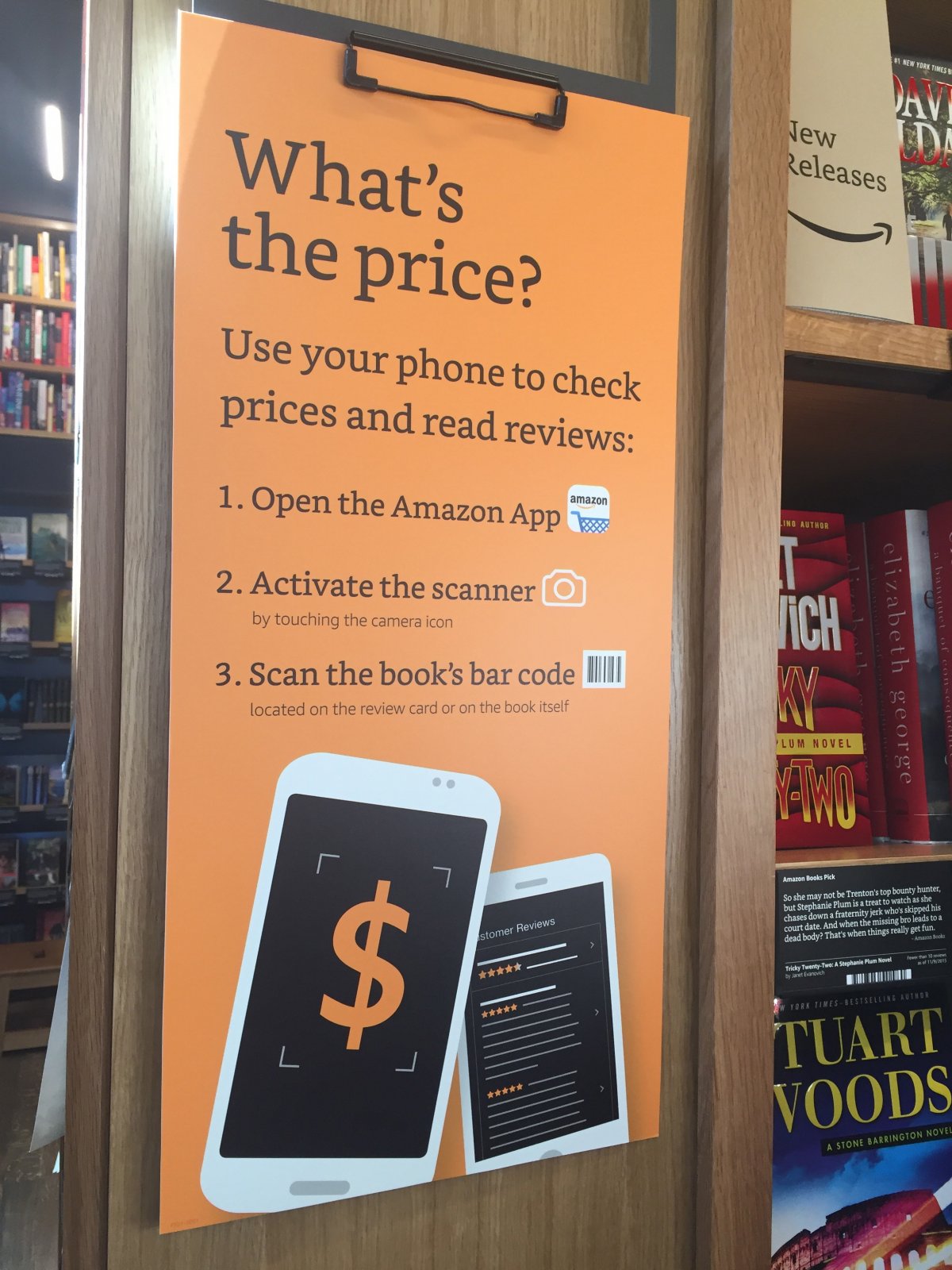
Amazon recently launched their first brick n mortar location in Seattle. The store is very well thought out except for one interesting part. There are no prices displayed in the store. Instead, users must take out the amazon app and scan each book to see a price. What Amazon should have done, is have the customers pull up the app and the books nearest them would already pop up on the screen due to the beacons knowing their location within the store. This would eliminate the need for the annoying scanning but still enabled Amazon to force people to use the app.
I hope by now you have a very good understanding about what beacons are and what they can accomplish. They are going to have a very big impact on the future of marketing, business and the overall consumer experience.
Do you have any questions or ideas on how beacons can be used? Share them with me below! I love to hear them.
Ready to implement your own beacons? Check out GemTot beacons here.


